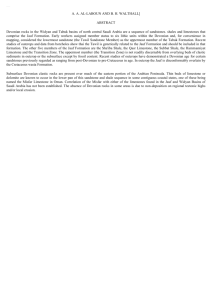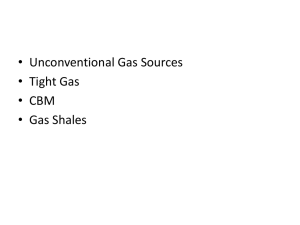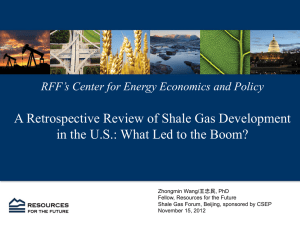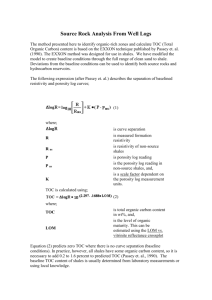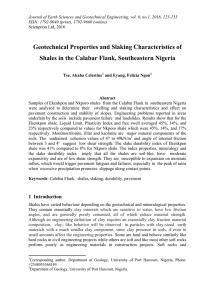Examination of the shale gas potential of Devonian shales in the
advertisement
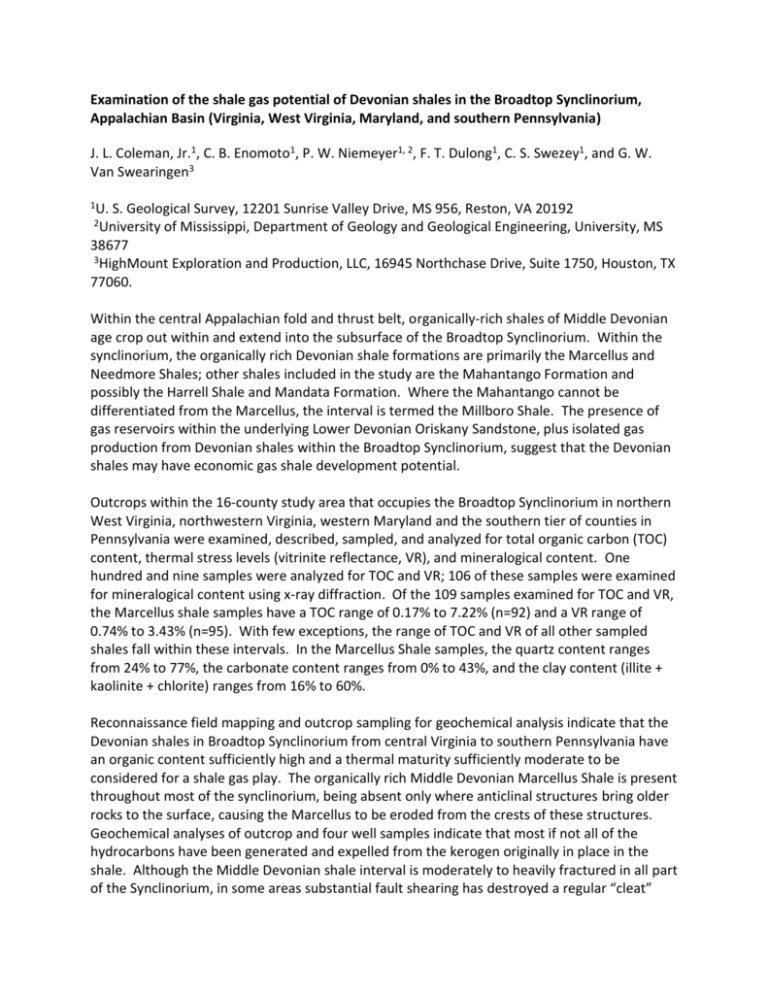
Examination of the shale gas potential of Devonian shales in the Broadtop Synclinorium, Appalachian Basin (Virginia, West Virginia, Maryland, and southern Pennsylvania) J. L. Coleman, Jr.1, C. B. Enomoto1, P. W. Niemeyer1, 2, F. T. Dulong1, C. S. Swezey1, and G. W. Van Swearingen3 1U. S. Geological Survey, 12201 Sunrise Valley Drive, MS 956, Reston, VA 20192 of Mississippi, Department of Geology and Geological Engineering, University, MS 38677 3HighMount Exploration and Production, LLC, 16945 Northchase Drive, Suite 1750, Houston, TX 77060. 2University Within the central Appalachian fold and thrust belt, organically-rich shales of Middle Devonian age crop out within and extend into the subsurface of the Broadtop Synclinorium. Within the synclinorium, the organically rich Devonian shale formations are primarily the Marcellus and Needmore Shales; other shales included in the study are the Mahantango Formation and possibly the Harrell Shale and Mandata Formation. Where the Mahantango cannot be differentiated from the Marcellus, the interval is termed the Millboro Shale. The presence of gas reservoirs within the underlying Lower Devonian Oriskany Sandstone, plus isolated gas production from Devonian shales within the Broadtop Synclinorium, suggest that the Devonian shales may have economic gas shale development potential. Outcrops within the 16-county study area that occupies the Broadtop Synclinorium in northern West Virginia, northwestern Virginia, western Maryland and the southern tier of counties in Pennsylvania were examined, described, sampled, and analyzed for total organic carbon (TOC) content, thermal stress levels (vitrinite reflectance, VR), and mineralogical content. One hundred and nine samples were analyzed for TOC and VR; 106 of these samples were examined for mineralogical content using x-ray diffraction. Of the 109 samples examined for TOC and VR, the Marcellus shale samples have a TOC range of 0.17% to 7.22% (n=92) and a VR range of 0.74% to 3.43% (n=95). With few exceptions, the range of TOC and VR of all other sampled shales fall within these intervals. In the Marcellus Shale samples, the quartz content ranges from 24% to 77%, the carbonate content ranges from 0% to 43%, and the clay content (illite + kaolinite + chlorite) ranges from 16% to 60%. Reconnaissance field mapping and outcrop sampling for geochemical analysis indicate that the Devonian shales in Broadtop Synclinorium from central Virginia to southern Pennsylvania have an organic content sufficiently high and a thermal maturity sufficiently moderate to be considered for a shale gas play. The organically rich Middle Devonian Marcellus Shale is present throughout most of the synclinorium, being absent only where anticlinal structures bring older rocks to the surface, causing the Marcellus to be eroded from the crests of these structures. Geochemical analyses of outcrop and four well samples indicate that most if not all of the hydrocarbons have been generated and expelled from the kerogen originally in place in the shale. Although the Middle Devonian shale interval is moderately to heavily fractured in all part of the Synclinorium, in some areas substantial fault shearing has destroyed a regular “cleat” system of fractures. Results of this study indicate that the Marcellus Shale within the Broadtop Synclinorium is generally similar in organic geochemical nature throughout its extent, and there are no clearly identifiable high potential areas (or “sweetspots”) based on one or more characteristics observed in the field.



